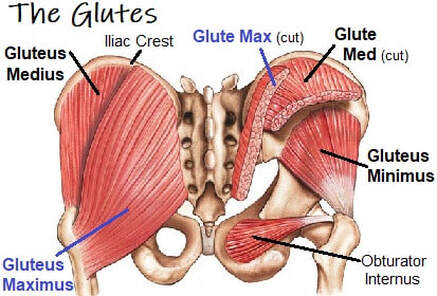The Ultimate Guide To The Single Leg Deadlift For Better Movement & Muscle Gains
Aug 09, 2021
Single leg deadlifts are a popular exercise for "functional fitness" gurus on the internet, but why are they so helpful? What are you trying to accomplish? How do you bias a certain outcome that you want?
In this guide I am going to discuss:
- Single leg vs staggered-stance single leg deadlift
- The biomechanics of a single leg deadlift
- How to bias outcomes for better movement & targeting muscles
Mechanics of Single Leg Deadlifts
There are two main types of single leg deadlifts:
1.) The Traditional Single Leg Romanian Deadlift

This type of single leg deadlift forces the pelvis to move as one unit, or orientation, because when one foot is off of the ground, you are significantly less able to achieve relative orientation and dissociation between sides of the pelvis:
This is more helpful for:
- Targeting the stance leg hamstring
- Balance training
- Training with lighter loads
2.) The Staggered Stance/Split Stance Deadlift
This type of single leg deadlift biases about 90% of the weight on the rear foot, while the forward leg is biased more as more of "kickstand" so we can use heavier loads and also create relative motion (dissociation) between sides of the pelvis:
This type of single leg deadlift is more helpful for:
- Lifting heavier loads
- Biasing dissociation (relative motion) between sides of the pelvis & therefore improving internal rotation
- Improving the ability to "load" into the hips
Mechanics of Single Leg Deadlifts
The amount of hip flexion (degrees of bend at the hips) will dictate what joint positions your lower body is in and what muscles you are targeting. There is a Limb Arc Model which visualizes this (credit to Bill Hartman for creating this):
This basically means that at the top of the deadlift, we are biasing more external rotation of our pelvis and lower body and the foot is in more (relative!) supination.

At the bottom of the deadlift (chest parallel to floor and around 90 degrees of hip flexion), the pelvis and lower body is biased more towards internal rotation and the foot is in more (again, relative to the top of the movement) pronation:
In a single leg deadlift variation where one of is off of the floor, we are not able to achieve as much internal rotation because we cannot create as much dissociation between sides of the pelvis:

When both feet are on the ground in a staggered-stance position, one side can go into more internal rotation (back leg), which will cause the front leg to go into relatively more external rotation.

As we get into more internal rotation, the glutes and hamstrings become more stretched while the adductors and internal rotators become more shortened. This will help you train the adductors and internal rotation fibers of the glutes (glute med and minimus) more:


My point is, if your goal is to build muscle and/or improve movement, a staggered-stance deadlift is often a better choice. If the goal is balance training, a single leg deadlift is often a better choice.
How to Bias More Internal Rotation
To increase the amount of hip internal rotation, we can do two main things:
- Add a contralateral (opposite side) load - This will cause more rotation into the back-side hip, which will cause the pelvis to "open up" more in the back as shown in the previous image.
- Elevate the toes - This will cause the bottom of the foot to flatten out more (pronation). This will also help you push your hips back further to sink into the rear-side hip. Also, because pronation is associated with internal rotation, this will feed up the chain to help bias more internal rotation.
How to Bias More External Rotation
To increase external rotation to recruit the glute max and hip abductors (posterior fibers of glute med and piriformis), we can do two main things:
- Add an ipsilateral (same-side) load - This will cause you to be pulled off towards the side which will naturally bias your glute max and hip abductors to create a larger "push" from the bottom position to ensure you don't fall off to that side
- Elevate the heel - This will bias relatively more supination of the foot which is associated with external rotation of the lower body and hip/pelvis.
Single Leg Deadlifts - The Summary
Both of these concepts of biasing joint positions and muscular recruitment will also apply to a single leg deadlift, just to a lesser extent because there is less relative motion and ability to load that single leg position.
If you wanted to lift more weight, you could easily add one weight in each hand or use a trap bar to increase demands on the muscles you want to target:
Looking for more biomechanics and exercise selection help? I cover this and many other exercises in much more detail in my Biomechanics Program!
Don’t miss out on free education
Join our email list to receive exclusive content on how to feel & move better.



